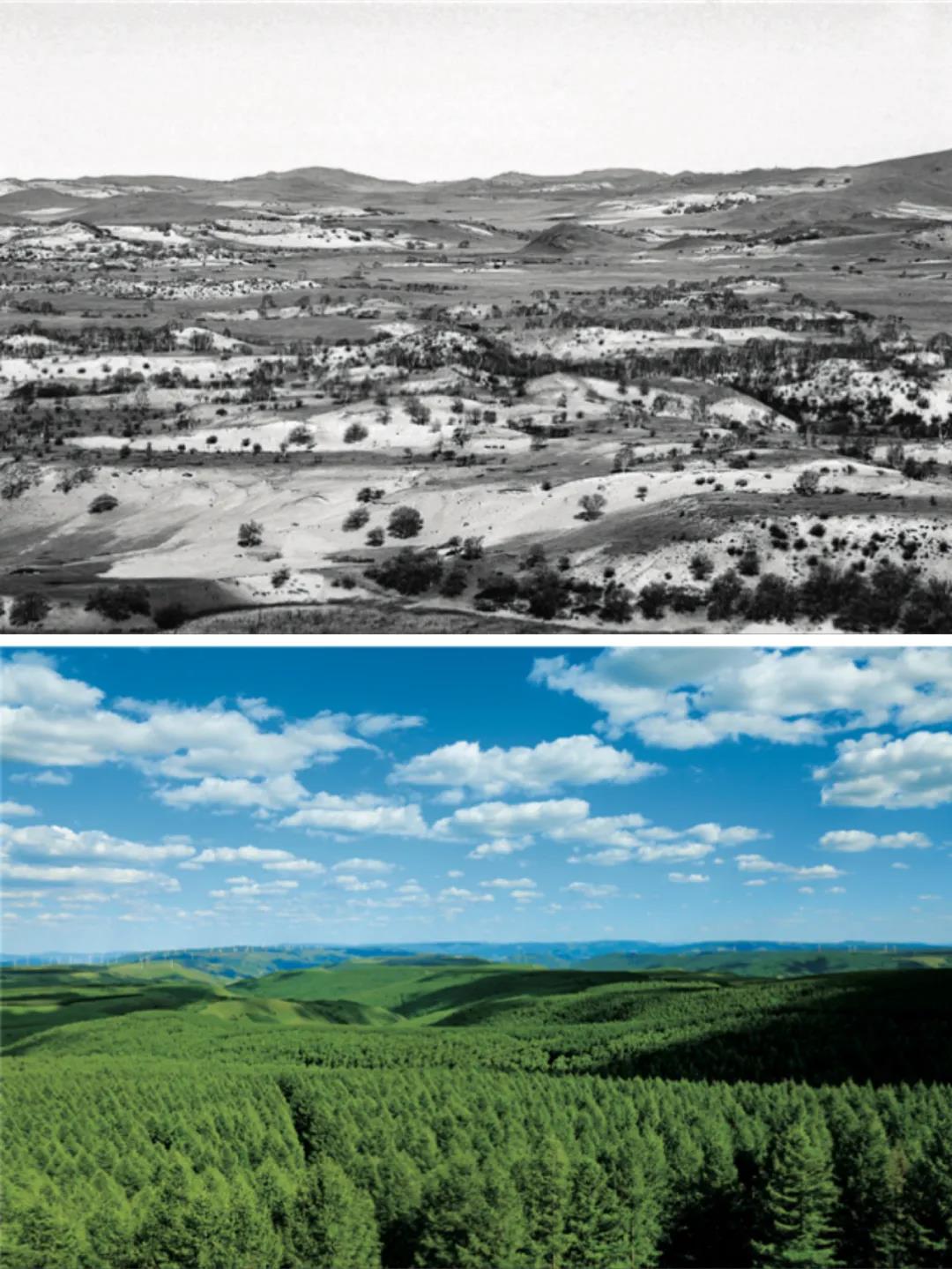Mighty manmade forest defeats Beijing sandstorms
For decades the northerlies shrouded Beijing in sand and dust every year. To halt the haze, people began in 1962 to plant trees at the Saihanba Jixie Forest Farm in Chengde, North China's Hebei Province.
After more than 50 years of efforts by generations of experts, today's Saihanba at 746.7 square kilometers is the largest manmade forest in the world.

Before and after: Saihanba Jixie Forest Farm
Since 2017, Saihanba’s forest has supported the development of rural tourism and specialized industries. The villages around Saihanba have rid themselves of extreme poverty to achieve a total annual income of more than 600 million yuan.
“All the hardships we've suffered, the tiredness we've endured, the sweat and tears we've shed, have all turned into happiness and pride!” said Chen Yanxian, a retired Saihanba forestry worker.
The success of Saihanba is the fruit of the persistent efforts and dedication of forestry workers and sets a fine example for modern China’s pursuit of ecological progress.
Great achievements of relocation, poverty alleviation
The 2021 TV series Minning Town tells the story of the relocation of impoverished residents in the Xihaigu area of Northwest China's Ningxia Hui Autonomous Region.
Ningxia set up a poverty alleviation partnership with Fujian Province in 1996. Through decades of adjustments, Xihaigu has cultivated its own characteristic industries including aquaculture, photovoltaic and tourism.

Before and after: Xihaigu area of Northwest China's Ningxia Hui Autonomous Region
The people of Xihaigu once relied on potatoes as their staple diet. Today farmers have started to grow mushrooms and other crops in greenhouses.
The village of Banyan in Huzhu Tu Autonomous County, Northwest China's Qinghai Province, used to have an official poverty rate of 56 percent.
But Banyan villagers harnessed production, employment and protection of national culture.
The village completed its relocation in March 2017 and the whole village was rid of poverty by the end of this year.
Old revolutionary base banishes poverty through tea, tourism
Located in the old revolutionary base area of the Dabie Mountains, East China's Anhui Province, Dawan was once categorized as a key poverty-stricken village.
Dawan has explored building an industry known as "planting tea on the mountain and welcoming guests at home.”
Thanks to tea, business is booming and villagers are profiting from the over 350,000 tourists who annually visit Dawan.
Chen Zeshen once tried to farm the barren local soil. Today he works in a tea factory.
“It's by my own hand and through the Party’s policies that my destiny really changed,” Chen said.
Poverty alleviation measures target local conditions
Rural tourism, kiwi fruit and Miao embroidery have alleviated poverty in the Central China village of Shibadong in Hunan Province’s Xiangxi Tujia and Miao Autonomous Prefecture.
Shibadong kiwis exported to overseas markets have benefited the villagers. The village’s collective economic income rose from zero to more than 2 million yuan ($310,000) between 2013 and 2020.
The Suide county village of Haojiaqiao is located in the hilly loess plateau of Northwest China’s Shaanxi Province. The government has developed rural tourism and built greenhouses, sheep and pig farms to the benefit of villagers.
Sanhe is a deeply impoverished village in Zhaojue county of the Liangshan Yi Autonomous Prefecture in Southwest China's Sichuan Province.
Nestled in the Daliang Mountains, the Sanhe economy used to consist primarily of corn and potatoes.
The government has helped villagers to vigorously develop farming, culture and tourism industries to overcome poverty and so achieve prosperity.
Party-building plus poverty alleviation work revitalize rural towns, villages
There used to be seven poor villages in Yeping, a township under the administration of the city of Ruijin in Southeast China's Jiangxi Province.
To fight poverty, the villages carried out "Party-building plus targeted poverty alleviation," through which, seven villages shook off extreme poverty.
Before and after: Xiadang Township
In the 1980s, per capita annual income was less than 200 yuan ($31) in Xiadang, a Shouning County township in Southeast China's Fujian Province.
Through the guidance of the Xiadang Communist Party of China committee in “adhering to Party-building and closely relying on the masses,” Xiadang has begun rural revitalization “with the characteristics of eastern Fujian” including tea and homestay tourism.
(Compiled by Xiong Xinyi, Liu Kechen, Ruan Ziyan, Jiang Huan and Zhang Heng)


